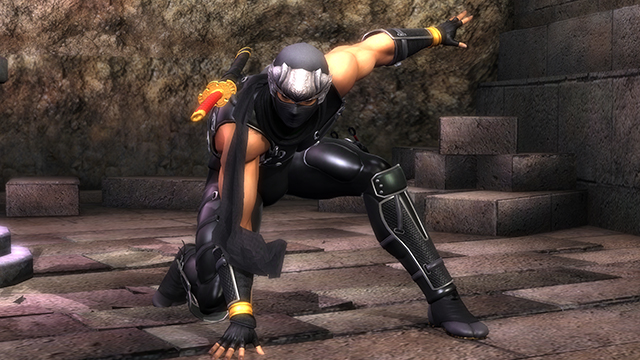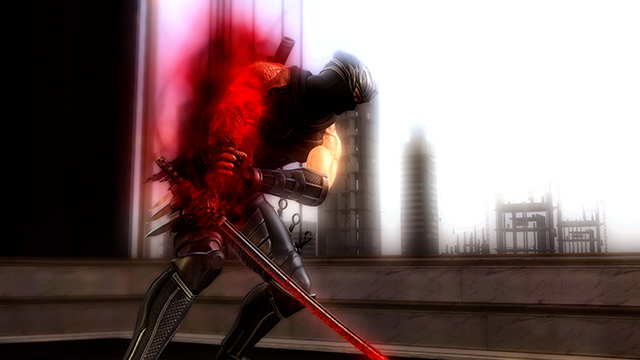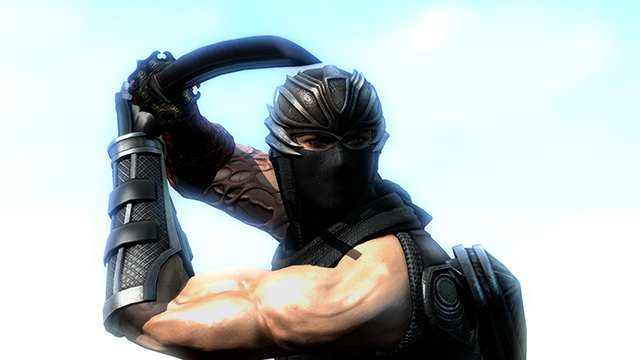Rereleasing classics has been trickier in past years, given remakes like Resident Evil 2 and Final Fantasy VII and impressive remasters like the Mass Effect: Legendary Edition. Just putting out old games again doesn’t have as much appeal now. Regardless of that reality, that’s exactly what Ninja Gaiden: Master Collection is and even though it contains two classics and a total misfire, nothing has been done to mitigate how each has aged.
The original Ninja Gaiden was transformative in how it brought a 2D title into 3D in 2004. It was an inventive way to translate the original’s brutality into the modern era and raise the bar for character action games.
Ninja Gaiden is a genre classic at its core so a lot of its strengths still carry over almost two decades later. Melee combat is punishing but rewards quick reflexes and prime split-second decision-making. It’s not quite as fast as its sequels, but there’s an elegance to its relatively slower speed (“relatively” is doing a lot of work here) that focuses more on small duels over ones with multiple deadly foes. Even a swarm of bats can kill careless players. Having this specific tempo of fast yet methodical action, it feels like the early beginnings of Nioh, the action-heavy Soulslike Team Ninja wouldn’t go on to release until 2017.
High difficulty and skill-based combat are just two common threads of DNA it shares with Soulslikes, too. Boss fights are climactic skirmishes that will quickly kick the player’s ass if they make a wrong move. Dying is unforgiving, too, as there are no autosaves and save statues can be rare at times.

Most games with this kind of punitive structure would utterly crumble to pieces 17 years later as modernity cuts them down to the fossils they are. Ninja Gaiden is not one of those games as the combat still holds up in the previously mentioned ways. Well, for the most part, as there is still some unmistakable cruft here. The camera is utterly terrible, often hiding threats and allowing for cheap shot after cheap shot. The controller also doesn’t vibrate, which is a puzzling holdover from the 2007 PS3 release before the system was graced with the DualShock 3.
However, most of the issues were addressed in the sequels but weren’t retroactively implemented here. Dodging and a handful of other moves have a few too many recovery frames and can make Ryu feel more sluggish than he should. The shooting controls are also still comically bad and don’t adopt the traditional trigger setup from the latter two games. All of the menus that pop up after getting killed are excruciatingly slow. Picking up items, saving, and weapon switching — especially weapon switching — all also involve too many menus or button presses and these added roadblocks slam the pacing to a screeching halt.
All of these small problems begin to add up in the most frustrating way because it points out how Team Ninja did almost nothing to update this game. Failing to incorporate quality-of-life changes is a neglectful way to treat one of the most coveted titles in the genre. Although it would have been great, it didn’t need a from-the-ground-up remake. Much like the first Mass Effect in the Legendary Edition, it just needed a handful of touch-ups here and there because the core is so sound. Without them, its age can mask its accomplishments and probably repel anyone who didn’t originally play it in some form.

Ninja Gaiden Sigma 2 fares a little better, but that’s only because it’s a sequel and ironed out a lot of the first game’s rougher edges back when it originally came out. The sublime combat is a little more responsive and fluid than it was last time around. The new Obliteration mechanic that finishes off weakened enemies adds an extra layer of strategy to fights as it encourages players to keep tabs on everyone and quickly prioritize or reprioritize who to go after.
A handful of additional moves, streamlined weapon swapping, snappier and fewer menus, and extra save points that grant full health all make this follow-up significantly more approachable. It’s still appropriately difficult, but more frequent healing lets it be even harder at times since it means every fight can be more intense; it’s a sprint, not a marathon like the first title. Leaving Sigma 2 unchanged is more forgivable since it isn’t as dated as its predecessor so it didn’t need saving.

But there is no saving Ninja Gaiden 3: Razor’s Edge since it is a terrible game at its core. Team Ninja’s sad fall from grace has not gotten better with age and bundling it with two far superior games only makes it look worse. The combat loses a lot of its finesse by jamming more enemies on-screen and fixating more on large brawls over intimate duels, tipping the balance into Dynasty Warriors territory. Cutting through crowds en masse is more tedious than challenging, especially when there are almost always too many faraway assholes with rocket launchers. If the first two entries were scalpels — precise and focused — the third one is a shotgun — loud and dumb.
“Loud and dumb” also perfectly describes the story. Normally, bad narratives in action games are excusable, which is the case for the first two games. Yet Razor’s Edge tries its damndest to pretend that its abysmal plot is worth the ludicrous amount of screentime it hogs. It has it all, too: flat, boring supporting characters, a mute child players are supposed to care about, a monotone protagonist, a goofy villain prone to shallow monologues, and, worst of all, a barrage of ridiculous attempts to guilt players for killing so many people. Any one aspect would be bad, but it becomes one of the worst gaming stories when it’s all mashed together and repeatedly pushed to the forefront.
Ninja Gaiden deserves better than to be dumped as is on the last generation of consoles. Ninja Gaiden: Master Collection doesn’t appear to have any visual enhancements (levels are still unimaginative and the women are still ridiculously oversexualized) nor does it run any better as it already ran at 60 frames per second. It’s not even on the newer consoles so it still has some unnecessarily long and frequent load times, too. Simply porting over these old games points out their age and doesn’t properly highlight the quality of the first two entries. And while Ninja Gaiden Sigma and its sequel are still worth going through once again, even the best swords can get a little rusty if not properly maintained.
Score: 7.5/10
As ComingSoon’s review policy explains, a score of 7.5 equates to “Good.” A successful piece of entertainment that is worth checking out, but it may not appeal to everyone.
Disclosure: Review code provided by the publisher. The game was reviewed on PS5 through backwards compatibility.










